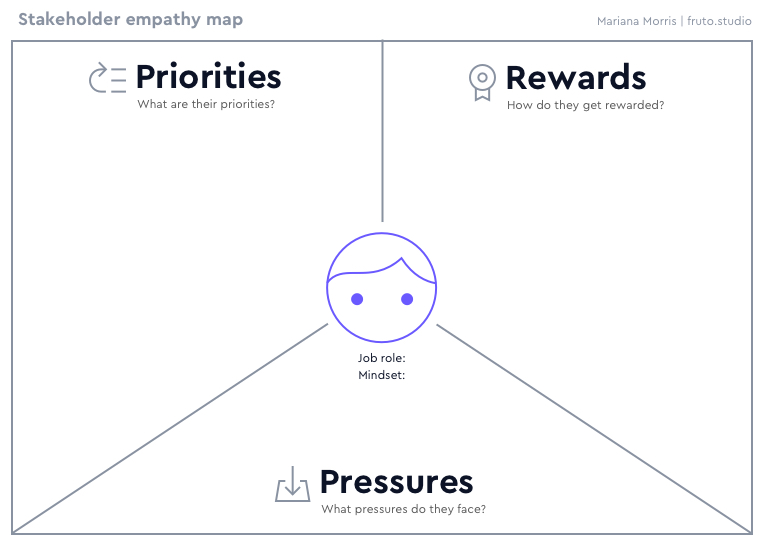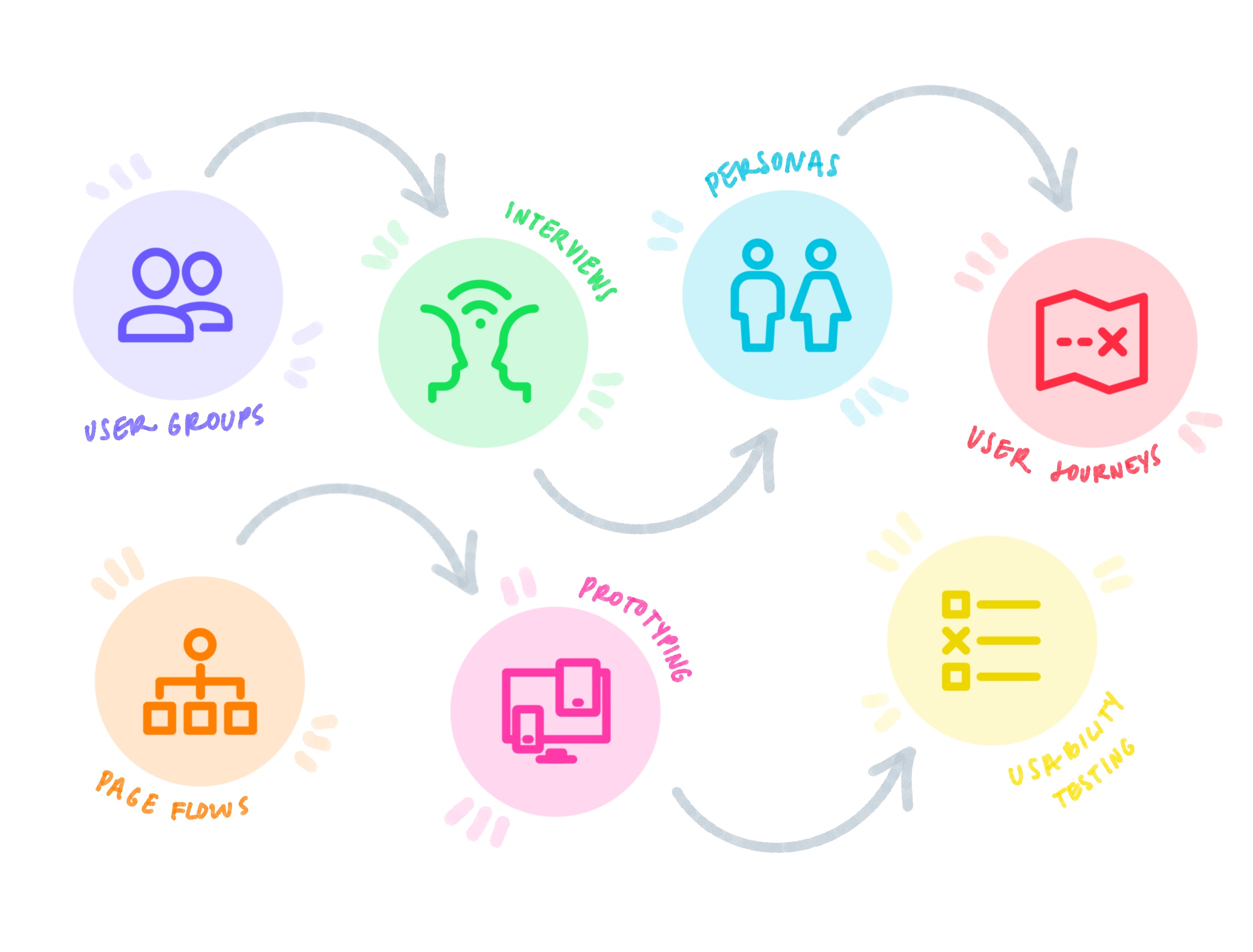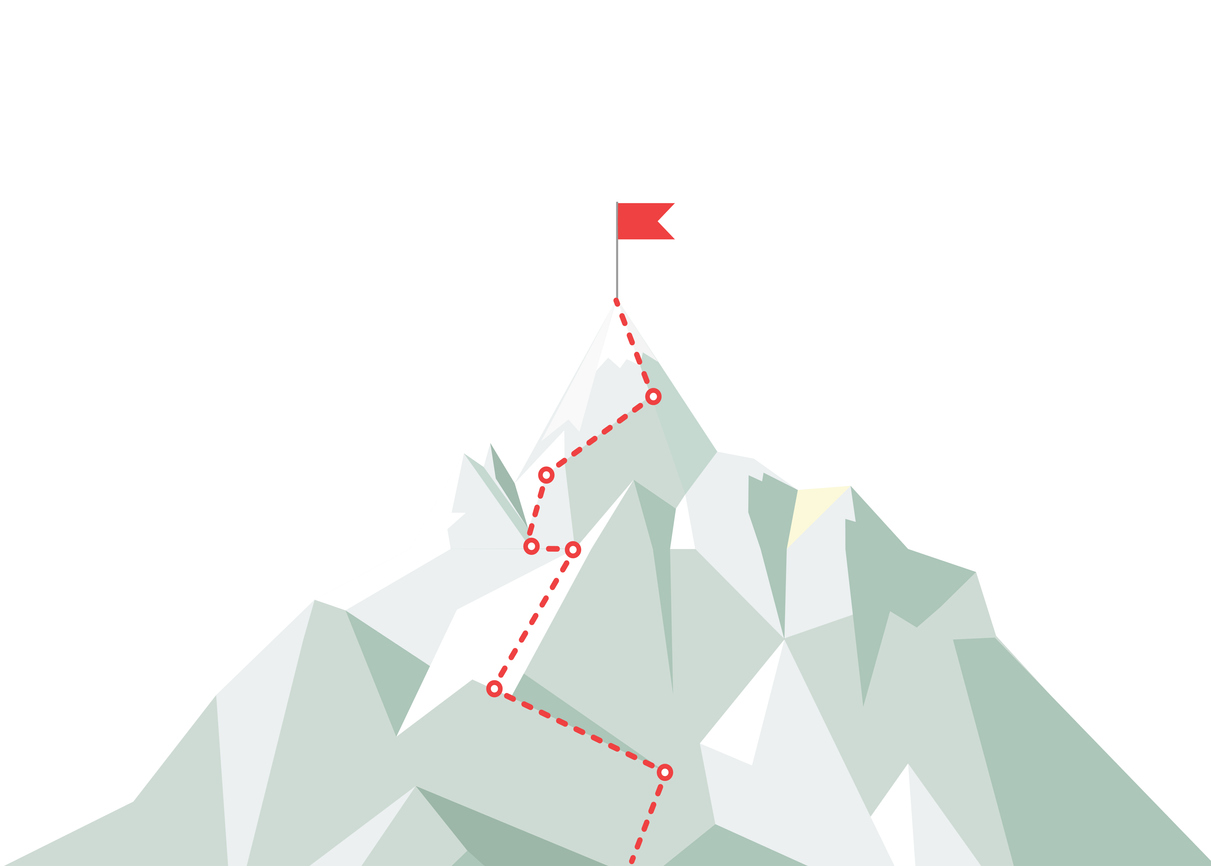Inspired by the feedback and conversations that stemmed from my recent piece on UX in Educational Publishing, today I’m going to share with you some of my story and experience when it comes to design leadership and advice on how to transform your organisation into one that’s design-led.
Specifically, I’m going to talk through some of the issues I’ve faced and actions I’ve taken when it comes to embedding a “design” culture, and to provide you with a simple 7-step guide doing the same. This post isn’t about what makes a great design lead (as I’ll be talking about that in a future post); rather, how to get your whole organisation on board with design thinking.
But before we dive into any of that, we first need to talk about UX maturity levels and how that impacts things...
Organisational UX maturity levels
If you’re not already familiar with corporate UX maturity levels, then I strongly suggest you have a read of this fantastic Nielsen Norman Group (NN/g) post on the subject.
This 8-stage framework posits that all organisations progress through the same sequence, starting at hostility towards usability, before moving through developer-centred and skunkworks user experience, before hitting the halfway point of securing a dedicated UX budget.
At this stage, you’re at the “Managed UX” stage, but there’s still a very long way to go before reaching “UX nirvana” - upwards of 30 years in some instances!

Nielsen Norman Group's Corporate UX maturity
So, as you can tell, depending on where your organisation sits on the ladder when you start your push for transformation, the more or less difficult it will be to change. Identifying where you are on this ladder early on is critical to your success.
One thing above all else will help you speed up the process, however: getting a design-focused leadership team in place, so next I’m going to talk briefly about just why that’s so important - both to the designers working within the organisation and to the organisation’s bottom line…
The need for a top-down approach (and having a seat at the table)
For an organisation to become design-led, there truly is nothing more powerful than having charismatic, motivational leaders setting a directive that across the business, people are to work differently and participate in very defined thinking processes.
IBM is the classic example here - entirely restructuring the business to be design-led and funding a massive hiring and education programme.
As McKinsey research conducted in 2018 found, this approach is well worth the investment with companies that scored highly on design delivering higher revenues and far greater returns for shareholders. Not only that, good design was found to matter regardless of the type of organisation - be that physical goods, digital products, services, or a combination.
Fundamentally, if you don’t have a seat at the table (i.e. there is no design or UX leadership), you need to find a champion within the leadership team that will support and invest in design so that you do have the top-down support that you’re going to need to succeed.
And on that note, allow me a moment more of your time to share with you a short overview of some of my own experiences before I go on to share my 7-step approach to transforming your organisation.
Developing a passion for great design
My background is graphic design, but from my first internship back in 2003, I’ve worked with web design. In the early days, this meant understanding usability conventions, information architecture and human-computer interaction but “UX design” as we know it today wasn’t really a thing. The process and techniques to get users involved in the design choices weren’t mainstream, for example.
I found myself working mostly in development teams and was the first ‘designer’ at various companies I worked for which led to me becoming passionate about sharing the value of good design. I was more than a little surprised by seeing teams developing digital products from a technology perspective, without considering the design of the products and involving users in the process.
The more I saw this happen, the more I wanted to stop it happening so that things weren’t so unusable and unclear for the actual end-users.
Being a force for change
I knew I had the skills to do something about it, I just needed to find others that wanted to do it with me.

Mariana Morris, co-founder at UX Oxford, presenting at the event.
Over the years, in my previous jobs, I tried many different approaches to get the buy-in needed for a more design-led approach. I threw myself into “I will make this work” mode - going full-speed and full-pressure, giving talks internally and being part of as many projects as I could get involved in. However, I still had by far the most success when I had top-down support telling others to “do what she says”.
Fundamentally, I’ve learnt that if you don’t do the job of finding out what problems exist - and resolving them - then no one else will.
Now that I run my own UX design agency, I find myself in a much better position to help others transform their organisations. And using my own experience and the lessons I’ve learned to guide the services we provide and the design communities (such as UX Oxford) that both I and my team get involved in outside of work.
7-steps to establishing a design-led organisation
Ok, so now you’ve heard some of my story and background, here are my design leadership lessons from the frontline: a 7-step action plan on how to drive transformation in your organisation - and identify if it’s just not meant to be...
1. Get top-level, top-down buy-in
In my experience - both directly at places I’ve worked, and through the stories I most commonly hear from others - design teams find themselves swimming against the tide, facing resistance from other teams they are working with. Product, developers, and marketing alike.
Without top-down leadership, it becomes very hard to remove these barriers. Senior leadership needs to champion design and, as managers, there is a need to work sideways with managers of other teams to make sure there are processes in place that work for everyone (as well as supporting the design team, of course!)
Where possible, finding someone in a leadership position that is a design champion (it might not have Design or UX in their title; it might be the Director of Product, Director of Technology or even the CEO, for example) who you can have regular catch-ups with and work together to make the change happen is a great place to start.
If design doesn’t have a seat at the table, the next best thing is to find a person in the leadership team that has the greatest appetite for design and nurture that relationship so they can help you fight your battles. Ideally you want to make your battles their battles (more on that in Step 4!).
Ultimately, moving from a traditional to a design-led organisation is largely about process and mindset.
2. Understand your stakeholders
In the middle-level, what I’ve found makes a big difference is creating good relationships with other managers so you can both understand how you can best help each other.

Stakeholder empathy map template
First, understand what matters to them (as a stakeholder) to understand how they get rewarded, what challenges they face and the concerns they have, etc. Then ensure you rephrase how you talk about design and design processes accordingly.
For example, a Project Manager may be mostly concerned with time and budget, so your communication may be best focused on how lean a design process can be.
Likewise, feature delivery has historically been the most important for development teams with “design” seen as something that slows the process down. However, in the long run, a good design process is actually a better - and faster - approach.
Listening is also highly important, and empathy is one of the best skills you can leverage across internal teams at all levels. By asking questions you create (genuine) connections, and having other managers and leaders of design influence others also helps to protect the design team, leaving them free to get on with their work more freely.
3. Build an “army”
Once you’ve tried making in-roads with those that can have a direct influence on things, the next step is to grow a team of designers. Admittedly this can be far easier said than done, especially if you’re not in a position to say “we need to hire more people”.
Don’t forget that your design team can be a mix of internal designers and outsourced designers working closely with you/your internal teams. 1 designer for every 8 developers works best in my experience, but often it’ll be a lot more disproportional than this.
Alongside building your design team (if at all possible), it is very important to find design champions in your organisation. The broader your reach, the easier it is to spread the design mindset, so find people who show a natural interest in UX design (such as a developer who volunteers a design idea or feedback), then look at how you can get them more on board and invested.
I found running internal Design Cafe’s worked well here. Informal get-togethers meeting every week or two, following a set format where attendees each have ~5minutes to talk about whatever best design and UX practice/inspiration/trends they’ve come across recently as a facilitated discussion (ideally led by someone that’s not a leader, so the sessions are still able to go ahead if none are available).
To establish such communities of practice yourself, focus on attracting regular attendees who want to take part - not just those that show up once never to be seen again! And consider keeping the conversation going between sessions using Slack or other informal internal communications channels.
The main aim is to gain visibility across your organisation so that others can see what is going on, and to figure out what new ideas and best practices you can apply to your business.
4. Choose your battles
Next up is finding the people in your organisation who can help you champion the design agenda.
It’s natural to want to be involved in everything and to fix things that are below your own expectations. But being spread too thin makes it harder to prove impact, and may cause you to drop the ball as a result of not having enough time.
So ensure you choose the right battles and work on projects where you can have the biggest impact and use them as case studies to get increased buy-in for design-led approaches elsewhere. Running internal ‘Show & Tell’ sessions at the end of projects to show the process and what went well can be used to great effect here.
Something else that has worked well for me, is running user research sessions that people from inside and outside of the project team can observe. Send an email/Slack around letting people know what’s happening, inviting anyone who’s interested to watch a 1:1 user research session. (Just remember that it’s important that they should observe the interview from a separate room/on a live video link rather than being in the room where the actual research takes place.)
This helps people to understand what user research actually is which can have a big impact as more internal teams see what really happens and how/why it’s such a useful part of the design process.
5. Upskill other teams
Designers naturally want high quality. Our name is on the finished product at the end of the day, so bad design is terrible!
Design is about using the right process and techniques at the right time. It’s not just about choosing the right colours and graphics: it’s a methodology. But because you won’t be able to be involved in every project, running workshops on different aspects of design is a great way of ensuring as many people as possible know and understand what these design processes are.
If there’s appetite from developers, why not train them to do certain things themselves so important design processes aren’t missed just because there is no designer available? Ask yourself “would it be better than no research at all?” Although the answer isn’t always “yes”, when they have some existing skills, then generally speaking it is worth it.
New recruits (in any area of the organisation) can also be told about UX design so they learn what it is as part of their onboarding process. This helps to remove the barriers associated with thinking that “only designers can do design”, and move to a more inclusive“everyone can be involved in the design process” way of thinking.
Design will happen even if not done by a designer, so the more people that understand the basic principles and processes, the better.
6. Make UX design visible
Having built your army, fought the right battles and trained as many people as possible, the next step is to ensure that everything you’re doing from a design perspective can be seen across the organisation.
Keeping the momentum going and making your work visible to those that aren’t already actively engaging with design can be as simple as using whiteboards or putting things up on walls around your office.
Engaging people from as many different areas of the organisation is almost more important than the total number of attendees you can get to engage with the activities that you put on. The important thing is that you share stuff and go beyond your own team. Your team already understands the value of design - but do others?
Consider whether you’re able to make use of other internal communication tools - such as a newsletter, monthly Town Hall meeting, or delivering sessions as part of an established “Lunch & Learn”-type programme.
You’ll start with baby steps, so don’t expect instant impact. But as people start following what you’re saying, things will start to speed up, and you will begin to build a movement.
The first wave is to get people to use the right words and process names, and to be able to say “this isn’t good enough!”. Ask “is this helping the organisation move forward?” If the answer is “Yes!”, then do more of it. If not, then there’s a need for more training.
No matter what stage your business is at - or how globally distributed your team is - there are plenty of opportunities to surface what it is you do. You're a designer: get creative!
7. Be prepared for a long journey (or taking a different path)
Transforming your organisation to one that’s design-led - especially if you don’t have an existing top-down, organisation-wide agenda to help push things through, is neither a simple, nor speedy task. In fact, as the NN/g research mentioned at the outset of this article indicates, you need to plan for the long-haul, especially if you do find yourself starting right at the beginning.
But it is possible to make an impact if you keep focused on the task at hand, get the right people involved, and ensure that as many people know about and see the value that good design can bring - not just to the end-user, but to your own organisation’s bottom line.
When you see that you’re making some impact, no matter how small, stop and pat yourself on the back. Well done - it’s an incredibly hard job that you’re doing!
If you’ve done all you can and still aren’t getting the traction you need, you really shouldn’t be afraid to move elsewhere. I heard a great quote the other day, which I’ll paraphrase as follows:
"Why do you want to get a seat at a dysfunctional table? Why not create your own table?"
If the organisation is too dysfunctional, then, to be honest, sometimes the right thing to do is to step away and find an organisation that does value your work. (I know which one worked best for me!). Not only will you find yourself able to do better work in a design-led organisation, but your mental health will probably thank you for it also!





